#kinda late but here's my contribution to support her solo <3
Photo

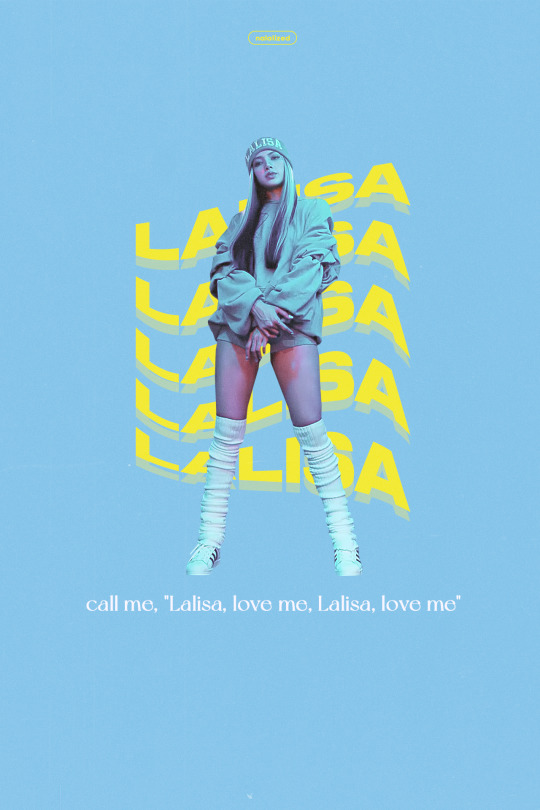

What’s my name? L-A-L-I-S-A ♡
#blackpinknet#femaleidolsedit#femaleidol#kpopgfxnetwork#blackpink#lisa#lalisa#by.nlzd#m:gfx#*bp#kinda late but here's my contribution to support her solo <3#500
735 notes
·
View notes
Text

i’m trying to make update posts for ash every six months or so to collect my thoughts, so here’s my beginning of 2021 one a tiny bit late! i’d like to get some new plots and threads going now that i’ve got ash organized with this, so like this if you want to plot something out and i’ll hit you up, or you can slide into my ims!
tw: some mentions of illness and hospitalization in re: ash at the end of last year in the “professionally” section
professionally
ash’s main solo work focuses continue to be solo music, endorsements and cfs, and writing/composing/producing for others. i just add this note to every update post at this point, but i don’t see his focuses changing much anymore. tbh.
he doesn’t have as many schedules rn because he’s still recovering his health from what happened in october. outside of knight stuff, he’s mostly doing non-strenuous solo activities like cfs and photo shoots. this is partly a management thing, because it would be a bad look for him to go through a health scare again, but ash is trying to take it in stride against his workaholic tendencies because a little less time in the limelight might be good for his mental health.
mostly, he’s just working toward his next album, keeping up with knight, and doing brand ambassador duties that are also scaled back from last year before he got sick
not sure whether to put this in this section or the personal one, but he’s trying to branch out in the topics he writes music about. he’s been writing about love and heartbreak for so long and that’s what he’s become known for, but he wants to be more than that. he’s written a lot about his feelings and his relationships, but he kinda feels like that’s contributed to his non-existent sense of self since he writes so much about other people in his life and their relation to him instead of about himself and his own internal world beyond romance.
personally
he’s actively working on himself. he’s been back in therapy for half a year now and it’s going alright. his mental health’s a little better and he has someone he can technically talk to about it, even if he doesn’t really open up to much to her (his therapist) yet.
wants to find himself. that’s a big theme for him rn. trying to find ash kwon instead of knight’s taeyong or the ash seen through other people’s eyes or the taeyong / ash people want him to be. he wants to know himself more.
so catch him doing more reading / getting out to go places that aren’t *gasp* bars and clubs like museums and cafes, but also spending a lot of time in the studio. he’s not sure what he has to do to find himself, but he knows taking himself away from music isn’t it. he just has to find himself in his music again.
besides music, he’s gotten interested in philosophy and cinematography / directing lately. since he can’t do much with that in-’verse as far as claims go, this is is really just a hobby and new way he’s found to shape his perspective on life.
plots
uhhh i don’t have a lot of exact plots ash needs rn. i’m more focused on developing his internal journey, so i think it might depend on the individual muse and their personality and such as to what fits best
in general, i think friendships (especially new or reconnected ones) would be good for ash, especially ones based on common interests / passions or sharing those with each other, or people who ash can have deep, introspective conversations with. he’s been really closed off for a while so it could be good for him to open up to other people more and form a stronger support circle
any plots that put ash in a position to just learn more about himself are good too
anything where he can write music for other muses or with other muses is always super awesome too!! let him connect with other muses musically <3 he needs more music / creative collaborators that aren’t npcs lol
other than that, i’d love to see any plots other muses might need filled and see how ash might be able to fil those (and ash always has his plots page as well)
i plan to put a plot call up for schedule things and threads for the latest base thing before long, so there will be more specific stuff up for grabs there too ig not sure when i’ll get to that tho
#&& there's nobody home | ooc#fmdcall#&& queued#i've left some people hanging on ims for a while too so feel free to use this to lmk you're still interested too
4 notes
·
View notes
Photo
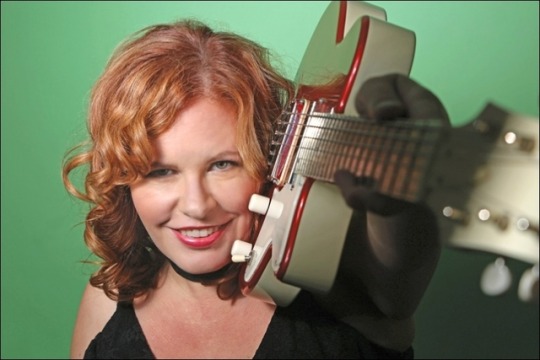
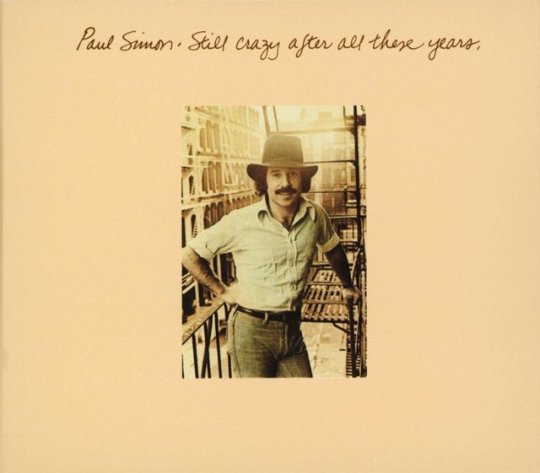
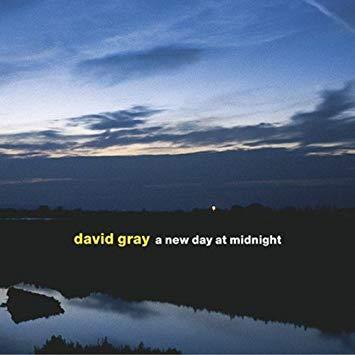

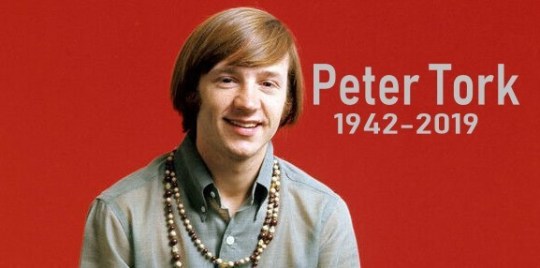

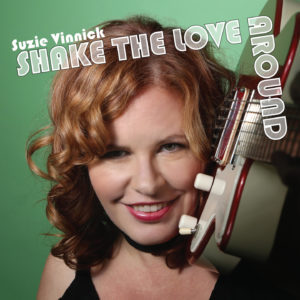

Consumer Guide / No.83 / Canadian singer-songwriter Suzie Vinnick with Mark Watkins.
MW : How did you find the pros and cons of Crowdfunding?
SV : I have done presales and crowdfunding for every album that I’ve recorded (six solo albums, and a number of collaborative projects). It is a great way to raise money for an album – it brings your supporters together in support of your art and enables them to be a part of making something happen. In a practical way, it also helps us artists keep from going into more debt as when you receive the monies in advance you don’t have to hit up your credit card (well maybe not as much ;-).
There’s not really any big cons; there is some administrative work but it feels good to send all the perks out (CDs, t-shirts, etc) knowing you have all this support for your music and art out there.
MW : Tell me about the tone & texture of the resulting album, Shake The Love Around...
SV : I have released six solo albums and another eight albums with other projects; Shake the Love Around is my latest roots and blues album and it’s a full band album (though I play a big part in the ‘band’).
My last two albums, Me ‘n’ Mabel and Live At Bluesville are both acoustic albums. Me ‘n’ Mabel is voice and guitar with some special guests and Live At Bluesville is just me and my little Larivee parlour guitar. I wanted to do an album that featured my voices – as a singer, as a guitarist, as a bassist and songwriter. I also played some lap steel on a few tunes.
I co-produced the album with my friend Mark Lalama which was a great experience. Mark is really easy going, I could bounce ideas off of him, he’d suggest things to me and we had a lot of flexibility to play with different musical ideas as the album was recorded at his home studio.
We chose songs for the album with as much of a positive message as we could – I had been through a few dark years and it was important to me to try and put some lightness out into the world. The album isn’t all ‘Pollyanna” and has a couple of darker leanings but is pretty positive for the most part. The title Shake The Love Around was named after a friends meal-time grace tradition. They’d have us all hold hands as someone said grace then at the end they’d say ‘shake the love around’ and invite everyone to shake their hands around, kinda like the wave. I always liked how my friends created community through their meal times and I thought that it’d make a fun title for the album.
I played guitar and I tracked the bed tracks along with drummer Gary Craig (Anne Murray, Blackie & the Rodeo Kings, Tom Cochrane). Afterwards, I added bass guitar, acoustic and electric guitars where needed and background vocals. Mark is a keyboard player and added some organ and accordion. Other players that contributed to the album were John Johnson, a Toronto based saxophone player; Kevin Breit and Colin Linden (a couple of my guitar heroes) played solos on a couple of tracks, and two of my album co-writers, David Leask and Dean McTaggart, sang some background vocals on the album.
MW : All your music releases to date are self-released. Is that by choice? Also, what are the advantages of such independence? Would you rule out going with a label?
SV : I’ve managed to have a full time career for almost 20 years as an independent artist. I get to choose what I do, when I do it, I own all of my recordings; there is definitely freedom in the independence.
The flip side to that is that being on a label may offer more support with bookings, promotion and support financially as well, so there might be less admin work and more time to create, perhaps? More show opportunities may come your way with more people working on your behalf.
I wouldn’t –not- consider it, but it would have to be a really good deal for me to consider going with a label.
MW : How long does the buzz last after coming off stage?
SV : I might have a bit of an adrenaline rush for a couple of hours after a show. It really depends how much travel I’ve been doing, how late my nights have been. Sometimes I will crash shortly after a show if it’s been a busy time, if there are time changes from the travel show to show.
MW : How do you usually unwind after a gig?
SV : After gig varies a bit as sometimes I end up heading back home so there’s not a lot of unwinding until we get home and hit the hay. But on a gig where I’m staying in town, after tearing down and packing up the merch I’ll usually head to the accommodations. If we’re being billeted we might sit and have a visit with the hosts or my band mates and have some snacks and a drink (maybe a shot of irish whisky, or maybe just a water lol) ; and, if I’m doing a solo performance and staying at a hotel I dive into my PJs, brush my teeth and cosy up in bed.
MW : Where do you usually shop for groceries? What are your main staples? Treats?!
SV : I buy groceries from the grocery store or Costco Warehouse; we live in the country so I tend to buy more stuff and store or freeze it to save us money and save us from have to drive back and forth to town.
Main staples tend to be fruits and veggies and the treats are chocolate and Chapman’s Vanilla Bean with Salty Caramel frozen yogurt – yum!!
MW : Thoughts on the sad passing of Peter Tork...are you a Monkees fan?
SV : I was sorry to hear of Peter Tork’’s passing. I used to watch The Monkees TV show every once in a while when I was a kid and am familiar with their music. I haven’t followed Peter in more recent years, but I do remember him being pretty funny. I’m originally from Saskatchewan (a province in Canada). I read that his father taught briefly at the University of Saskatchewan Regina campus and that he would come to Regina to visit him on occasion.
MW : List your Top 10 fave albums of all-time in order of merit, saying something about your No.1 choice…
SV :
This is my current list, but it changes…
10 Joni Mitchell – anything by her 9 Paul Simon – Still Crazy After All These Years (1973) 8 Heart – Greatest Hits (1998) 7 Stevie Ray Vaughan – Soul To Soul (1985) 6 Foo Fighters – Greatest Hits (2009) 5 Pink Floyd – The Wall (1979) 4 Rickie Lee Jones – Rickie Lee Jones (1979) 3 David Gray – A New Day At Midnight (2002) 2 Ry Cooder – anything by him 1 Supertramp – Breakfast In America (1979)
I first heard Supertramp when I was eleven; The Logical Song was their single at the time. Not sure why it resonated for me at that young age but I loved it. I was learning saxophone in school band and the music seemed accessible to me. I also loved singing along with Roger Hodgson and consider him a vocal influence.
MW : To round off, tell me about where you live and what’s to see & do...
SV : I live in an 1880's brick church in the Niagara Region of Ontario in the Township of Wainfleet.
When I am off the road touring, I like to go walking in the countryside. There are a lot of farms around here and big skies. It's quite beautiful.
When it's warmer, my boyfriend James and I might head to Lake Erie which is about 10 minutes south of our place and walk the beach or go for a swim and maybe have an ice cream.
There is a little town called Dunnville 10 minutes away where we'll go on occasion to hear live music and occasionally we'll drive to Welland (about 30 minutes away) to catch a film in the theatre.
The cities of Hamilton and Toronto are 1-1.5 hours away so sometimes we'll drive into the city to catch some music or head to a gallery but for the most part we stay close to home.
http://www.suzievinnick.com/
http://www.suzievinnick.com/video
https://soundcloud.com/suzie-vinnick
https://www.facebook.com/suzievinnickmusic
https://twitter.com/suzievinnick
https://www.instagram.com/suzievinnick
https://open.spotify.com/artist/2sMmcyVPI1JbcagQFS4dZg
© Mark Watkins / April 2019
0 notes
Note
Thanks, can you copy and paste some things from the link? Sorry for asking in advance btw, sometimes an security certificate warning pops up on my tablet and scares me away, I once went to a site multiple times despite this and my tablet froze on the Internet and I had to refresh the app and close out the site. so I'm kinda vigilant about going on certain websites, apologies again in advance. x ~ Jacqi
It’s alright! I can paste all of them here, but I’ll put it under a read more because it’s long.
1.His full name was Georgios Kyriacos Panayiotou.
2. He was born on June 25, 1963.
3. George Michael was born in East Finchley, London. His father, Kyriacos Panayiotou, a Greek Cypriot restaurateur, moved to England in the 1950s and changed his name to Jack Panos. Michael’s mother, Lesley Angold (née Harrison; 1937–1997), was an English dancer; his maternal grandmother was Jewish.
4. Michael spent the majority of his childhood in Kingsbury, London, in the home his parents bought soon after his birth; he attended Kingsbury High School.
5. While in his early teens, the family moved to Radlett, Hertfordshire. There, Michael attended Bushey Meads School in the neighbouring town of Bushey, where he befriended his future Wham! partner Andrew Ridgeley.
6. The two had the same career ambition of being musicians.[10] Michael would busk on the London Underground, performing songs such as “’39” by Queen.
7. His involvement in the music business began with his working as a DJ, playing at clubs and local schools around Bushey, Stanmore, and Watford. This was followed by the formation of a short-lived ska band called the Executive, with Ridgeley, Ridgeley’s brother Paul, Andrew Leaver, and David Mortimer (later known as David Austin
8. George Michael formed the duo Wham! with Andrew Ridgeley in 1981. The band’s first album Fantastic reached No. 1 in the UK in 1983 and produced a series of top 10 singles including “Young Guns”, “Wham Rap!” and “Club Tropicana”.
9. Their second album, Make It Big, reached No. 1 on the charts in the US. Singles from that album included “Wake Me Up Before You Go-Go” (No. 1 in the UK and US), “Freedom”, “Everything She Wants”, and “Careless Whisper” which reached No. 1 in nearly 25 countries, including the UK and US, and was Michael’s first solo effort as a single.
10. George Michael sang on the original Band Aid recording of “Do They Know It’s Christmas?” (which became the UK Christmas number one) and donated the profits from “Last Christmas/Everything She Wants” to charity.
11. He also contributed background vocals to David Cassidy’s 1985 hit “The Last Kiss”, as well as Elton John’s 1985 successes “Nikita” and “Wrap Her Up”.
12. Michael cited Cassidy as a major career influence and interviewed Cassidy for David Litchfield’s Ritz Newspaper.
13. Wham!’s tour of China in April 1985, the first visit to China by a Western popular music act, generated worldwide media coverage, much of it centred on Michael.
14. Before Wham!’s appearance in China, many kinds of music in the country were forbidden. The audience included members of the Chinese government, and Chinese television presenter, Kan Lijun. The tour was documented by film director Lindsay Anderson and producer Martin Lewis in their film Foreign Skies: Wham! In China.
15, With the success of Michael’s solo singles, “Careless Whisper” (1984) and “A Different Corner” (1986), rumours of an impending break up of Wham! intensified.
16. The duo officially separated in 1986, after releasing a farewell single, “The Edge of Heaven” and a singles compilation, The Final, plus a sell-out concert at Wembley Stadium that included the world premiere of the China film.
17. The Wham! partnership ended officially with the commercially successful single “The Edge of Heaven”, which reached No. 1 on the UK chart in June 1986.
18. The beginning of his solo career, during early 1987, was a duet with Aretha Franklin. “I Knew You Were Waiting” was a one-off project that helped Michael achieve an ambition by singing with one of his favourite artists, and it scored number one on both the UK Singles Chart and the US Billboard Hot 100 upon its release
19. For Michael, it became his third consecutive solo number one in the UK from three releases, after 1984’s “Careless Whisper” (though the single was actually from the Wham! album Make It Big) and 1986’s “A Different Corner”.
20. The single was also the first Michael had recorded as a solo artist which he had not written himself.
21. The co-writer, Simon Climie, was unknown at the time, although he would have success as a performer with the band Climie Fisher in 1988. Michael and Aretha Franklin won a Grammy Award in 1988 for Best R&B Performance – Duo or Group with Vocal for the song
22. In late 1987, Michael released his debut solo album, Faith. In addition to playing a large number of instruments on the album, he wrote and produced every track on the recording, except for one, which he co-wrote.
23. The first single released from the album was “I Want Your Sex”, in mid-1987. The song was banned by many radio stations in the UK and US, due to its sexually suggestive lyrics.
25. MTV broadcast the video, featuring celebrity make-up artist Kathy Jeung in a basque and suspenders, only during the late night hours.
26. Some radio stations played a toned-down version of the song, “I Want Your Love”, with the word “love” replacing “sex”.
27. When “I Want Your Sex” reached the US charts, American Top 40 host Casey Kasem refused to say the song’s title, referring to it only as “the new single by George Michael.” In the US, the song was also sometimes listed as “I Want Your Sex (from Beverly Hills Cop II)”, since the song was featured on the soundtrack of the movie. Despite censorship and radio play problems, “I Want Your Sex” reached No. 2 on the US Billboard Hot 100 and No. 3 in the UK.
28. The second single, “Faith”, was released in October 1987, a few weeks before the album. “Faith” became one of his most popular songs. The song hit No. 1 on the Billboard Hot 100 in the US and maintained that position for four consecutive weeks.
29. It also reached No. 2 in the UK Singles Chart.[13] The video provided some definitive images of the 1980s music industry in the process—Michael in shades, leather jacket, cowboy boots, and Levi’s jeans, playing a guitar near a classic-design jukebox.
30. On 30 October, Faith was released in the UK and in several markets worldwide. In the United States, the album had 51 non-consecutive weeks in the top 10 of Billboard 200, including 12 weeks at No. 1. Faith had many successes, with four singles (“Faith”, “Father Figure”, “One More Try”, and “Monkey”) reaching No. 1 in the US.
31. In 1988, Michael embarked on a world tour. In Los Angeles, Michael was joined on stage by Aretha Franklin for “I Knew You Were Waiting”. It was the second highest grossing event of 1988, earning $17.7 million.
32. In February 1989, Faith won the Grammy Award for Album of the Year at the 31st Grammy Awards. At the 1989 MTV Video Music Awards on 6 September in Los Angeles, Michael received the Video Vanguard Award.
33. According to Michael in his film, A Different Story, success did not make him happy and he started to think there was something wrong in being an idol for millions of teenage girls. The whole Faith process (promotion, videos, tour, awards) left him exhausted, lonely and frustrated, and far from his friends and family.
34. “Freedom ’90” was the second of only two of its singles to be supported by a music video (the other being the Michael-less “Praying for Time”). The song alludes to his struggles with his artistic identity, and prophesied his efforts shortly thereafter to end his recording contract with Sony Music
35. As if to prove the song’s sentiment, Michael refused to appear in the video (directed by David Fincher), and instead recruited supermodels Naomi Campbell, Linda Evangelista, Christy Turlington, Tatjana Patitz, and Cindy Crawford to appear in and lip sync in his stead. It also featured the reduction of his sex symbol status.
36. At the 1991 Brit Awards, Listen Without Prejudice Vol. 1 won the award for Best British Album.
37. George Michael performed at The Freddie Mercury Tribute Concert on 20 April 1992 at London’s Wembley Stadium. The concert was a tribute to the life of the late Queen frontman, Freddie Mercury, with the proceeds going to AIDS research.
38. In his last ever radio interview Mercury had praised Michael adding that he loved his track “Faith”.
39. At the age of 19, Michael told Andrew Ridgeley and close friends that he was bisexual. Michael also told one of his two sisters, but he was advised by friends not to tell his parents about his sexuality.
40. In a 1999 interview with The Advocate, Michael told the Editor in Chief, Judy Wieder, that it was “falling in love with a man that ended his conflict over bisexuality”. “I never had a moral problem with being gay”, Michael told Wieder. “I thought I had fallen in love with a woman a couple of times. Then I fell in love with a man, and realized that none of those things had been love.”
41. In 2007, Michael said he had hidden the fact he was gay because of worries over what effect it might have on his mother.
42. George Michael established a relationship with Anselmo Feleppa, a Brazilian dress designer, whom he had met at the 1991 concert Rock in Rio.
42. Six months into their relationship, Feleppa discovered that he had HIV. Michael later said: “It was terrifying news. I thought I could have the disease too. I couldn’t go through it with my family because I didn’t know how to share it with them – they didn’t even know I was gay.”
42. In 1993, Feleppa died of an AIDS-related brain haemorrhage.
43. George Michael’s single “Jesus to a Child” is a tribute to Feleppa (he consistently dedicated it to him before performing it live), as is his 1996 album Older.
44. In 1996, George Michael entered into a long-term relationship with Kenny Goss, a former flight attendant, cheerleader coach and sportswear executive from Dallas. They had homes in Dallas and an £8 million mansion in Highgate, North London.
45. In late November 2005, it was reported that Michael and Goss would register their relationship as a civil partnership in the UK, but because of negative publicity and his upcoming tour, they postponed it to a later date.
46. On 22 August 2011, the opening night of his Symphonica world tour, George Michael announced that he and Goss had split two years earlier. Goss was present at Michael’s British sentencing for driving under the influence of cannabis on 14 September 2010.
47. Questions of Michael’s sexual orientation persisted in public until 7 April 1998, when he was arrested for “engaging in a lewd act” in a public restroom of the Will Rogers Memorial Park in Beverly Hills, California.
48. On 26 February 2006, Michael was arrested for possession of Class C drugs, an incident that he described as “my own stupid fault, as usual.” He was cautioned by the police and released.
49. During September 2007, on Desert Island Discs, he said that his cannabis use was a problem; he wished he could smoke less of it and was constantly trying to do so.
50. On 5 December 2009, in an interview with The Guardian, Michael explained he had cut back on cannabis and now smoked only ‘seven or eight’ spliffs per day instead of the 25 he used to smoke.
51. In the early hours of Sunday 4 July 2010 Michael was returning from the Gay Pride parade. The singer was spotted on CCTV driving into the front of a Snappy Snaps store in Hampstead, North London and was arrested on suspicion of being unfit to drive.
52. During the time of Margaret Thatcher as the Conservative Prime Minister of the United Kingdom throughout the 1980s, Michael voted Labour.
53. Michael wrote “Shoot the Dog”, a song critical about the friendly relationship between the British and American governments, in particular Tony Blair and George W. Bush, with their involvement in the Iraq War.
54. During 2000, Michael joined Melissa Etheridge, Garth Brooks, Queen Latifah, the Pet Shop Boys, and k.d. lang, to perform in Washington, D.C. as part of ‘Equality Rocks’ – a concert to benefit the Human Rights Campaign.
55. He devoted his 2007 concert in Sofia, Bulgaria, from his “Twenty Five Tour” to the Bulgarian nurses prosecuted in the HIV trial in Libya.
56. On 17 June 2008, Michael said he was thrilled by California’s legalisation of same-sex marriage, calling the move “way overdue”
57. On 1 December 2011, doctors at the hospital in which George Michael had stayed announced that the singer was “steadily improving” and that he had moved out of the intensive care ward. On 21 December 2011, the hospital discharged Michael.
58. On 23 December 2011, Michael made a public speech outside his house in Highgate, London, in which he stated that the staff at the Vienna General Hospital had saved his life and that he would perform a free concert specifically for those staff. While making the speech, he became emotional and breathless.
59. During the speech, he also mentioned that he had undergone a tracheotomy. He also said that, after waking from the coma, he had a temporary West Country accent.
60. On 25 December 2016, Michael died in his sleep at his home in Goring-on-Thames, Oxfordshire, aged 53. No cause of death was immediately determined. His manager has stated that heart failure is the probable cause of death.
5 notes
·
View notes
Photo

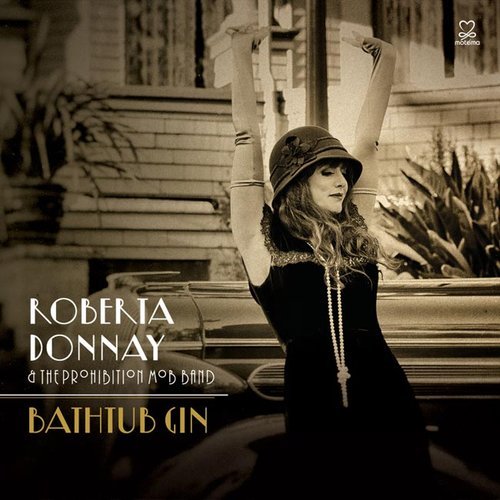
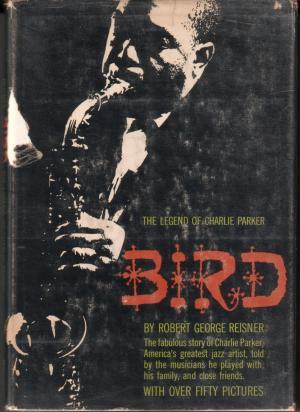


Consumer Guide / No.45 / Musician Roberta Donnay with Mark Watkins.
MW: Roberta, you live in San Francisco, does any of the 60's 'flower power' energy still exist in the area?
RD: I think that the energy of the 1960s does certainly exist in the San Francisco Bay Area, Mark. I'm reminded every time I tour the bookstore called “City Lights” in North Beach and just across, my fav bar ever, called “Vesuvio” - the alleyway in between is named for Jack Kerouac.
http://www.citylights.com/
http://www.vesuvio.com/
I guess this just shows the energy of a city which seemed to encourage ‘Flower Power’, Love and Peace.
San Francisco certainly had that open creative energy when I first moved out here, which is what drew me to it. I feel the energy of an educated society here, mostly, I'm surrounded by similar spiritual seekers, those who feel they want to improve their own lives as well as society, and those who are creative. Creativity is alive and well in the “City by the Bay!”.
And altho' I didn't grow up here, and had no real interaction with the hippies, my friends are certainly proof that the hippies made a real contribution here, and I guess I've sung with quite a few from that era. Although the known music coming out of SF was primarily rock, and I really didn't listen to rock music at all. Even tho' I moved to an area where The Grateful Dead was king, I have to admit
I never really listened to the band, I never was interested in much rock music or white music for that matter. For me it was Blues, it was Jazz, it was R&B. That was pretty much it. I grew up in Washington DC area, and I was lucky to listen to my parents' records and the radio. Most of what I learned was from the radio.. and then later going to jazz clubs. That's pretty much where I stayed as a music fan, to this day. I still listen 99% to jazz.
MW: What's the attraction of the ‘Jazz Age’ and how are you bringing the ‘Roaring Twenties’ boom up-to-date through your music / stage shows?
RD: My attraction to the ‘Jazz Age’ began like almost any good adventure, in kind of a backwards way. I'd finished my first real jazz record with Orrin Keepnews and had been diving into jazz from the 1960s, and I started thinking about the mentors of my mentors. And so I knew that Bessie Smith was Billie Holiday's mentor, but who was Bessie Smith's mentor? Ma Rainey. And I knew Sippie Wallace, and of course Ethel Waters, and Ida Cox. I started listening, quite innocently, to their songs, with no real intention of anything, except I was really looking for something I could "give away for free" to fans and I thought it would be great to find a public domain song. And so I found "You've Been A Good 'Ole Wagon (But You Done Broke Down)" done by Bessie Smith, thinking this was the same song written in 1896 with the same title. I went to record it, and only after "A Little Sugar" came out did I find out that there were two songs with the same title, and the one I recorded was really from around 1926. My plan was to first record a project based on the 20s/30s - then move into the 40s/50s - and it would be like a sweet history lesson using all my mentors in jazz.
But something funny happened. It was like the wind blew this beautiful vision in with all the sounds of the era. And the project kind of created itself. We went to do a mock photo session and I borrowed some 1920s props. I was trying to pose like a 1920s film star, just having fun, and these photos came out like, “WOW!” - I hadn't ever seen myself that way, really, it was just like an experiment leading up to the real photo-shoot. Eddy Bee (Images) helped create the look. And from then on, it was like the branding happened, everyone who saw those photos and came to the shows, were like, “WOW!”, this is really like a thing. My only goal was to educate the public, especially the youth, on the history of this music, and all our music, since it all came from then and before, from the blues. I'm such a history geek, and I ended up getting kinda stuck in the 1920s and 1930s; it took over; all the melodies, the images of that time, the flappers who were pushing the envelope for women's rights in their own way, the gangsters who helped support jazz by opening and operating Speakeasies, the Prohibition, the artists themselves, everyone who built and operated dance halls, and all those who were involved in recording this music and bringing it to the world. I just felt like a kid discovering all this, just like the first time I heard Louis Armstrong or Billie Holiday. Mesmerized. And completely in love.
Our stage show just kept being fun for us. At one point we decided that I should create a character from the era, who could announce stuff, which I did, and I named her "Velma Parrish". There's even a little movie around her on YouTube, along with myriad other videos on the making of our records, live performances, and other fun stuff. Now my name on stage is back to my name but the character stayed and we also the guys really got into their characters as the "Prohibition Mob" - they all dress like gangsters from the 1930s, they drink from flasks, and they all have mobster nicknames. It's really endearing, especially out on tour, when sometimes we have pick-up horn players, and these guys are really like geeky jazz professors who all of a sudden get to dress up and curse like mobsters. It's entertaining for me, that's for sure!
MW: How did you assemble your 'Prohibition' band?
RD: Well Mark, I had lots of friends who I loved playing with in the Bay Area. I called these guys and told them I wanted to put together a band around this recording project and they were all like "YEAH!" and all were so supportive from the very beginning. I realize now I had the perfect group of musicians without really trying or thinking very hard about it; there were no auditions.
Sam Bevan (bass/arranger/producer) and I had been playing these jazz gigs together for a few years already, and one event we'd been asked to put together a wedding gig for friends who were members of the ART Deco Society - and we could only play music up until 1929. So quickly we assembled these charts, which I wasn't really familiar with, but after playing that gig, Sam and I were like, “YEAH!”, this was cool.
I called John R. Burr, pianist, who just embodies this particular sound of jazz/blues, and a drummer I'd met and played with from LA, Michael Barsimanto. Then on horns - Rich Armstrong (trumpet), Wayne Wallace (trombone), and Sheldon Brown (sax/clarinet). Sheldon was the only one I didn't already know - Sam brought him in, and the whole group played. I think we had one long rehearsal with the horns, the rhythm section had one previous rehearsal, and then we went in to record. We'd planned two albums at the same time, so we recorded 26 songs in three days, most of these were first takes. And all I can say is, there's no substitute for great musicians!
Everyone put their heart and soul out there. Then we added a few originals before "Bathtub Gin" came out, and by that time Wayne had moved out of town. So we got Danny Grewen. And our original drummer who I'd played most of my jazz gigs with over the years, Deszon Claiborne.
On the newest project we finally got to work with Mike Rinta on trombone, who'd been playing with the live band all these years : Mike had also worked with Dan Hicks. And so the dye was cast and the band just grew even better than before. We also just added Matt Baxter on guitar for the new project, and Matt and I had been in my original bands back in the late 90s, early 2000s, so it was really perfect.
MW: Dan Hicks died last year (2016). What was it like recording and performing with Dan, and what lives on, Roberta?
RD: It's tough to put into words the effect that Dan Hicks has had on me as a musician, as an artist, as a human being. Dan was incredibly funny, serious and truthful all at the same time. He could be a terror to be around, like when he was unhappy at sound check if the sound guy didn't get what he wanted. But mostly, he was an angel to me, he was kind, he was encouraging, he was supportive way above what he needed to be. And I can't tell you how much fun it was to sing and play his music. It was always just the BEST.
And I was a huge fan as a kid growing up on the east coast, I'd be listening to the radio and all of a sudden there was this sound, and it was "Dan Hicks and The Hot Licks" and it was understood immediately and loved instantly. I think Dan had that effect on most audiences. Once you saw him, and you only had to see him once, you were a fan for life.
Dan was a consummate performer. Like an old vaudeville guy. He could dance, he could sing, he could tell jokes, he could play. And then of course, he could write. He would do anything, anything, to entertain you. There were no boundaries. And sometimes you wish there were! Ha! He taught me more as an entertainer than anyone had in my life. And I was lucky he called me that day in 2005, to come over and sing a few songs with him. I had no idea that this would become my job or that he would become such an important figure in my life. He's definitely one of my musical mentors, along with Orrin Keepnews. I'm so lucky to have had both these men, genius musical figures, in my life. I was lucky to have been on the last three records with him, too. Dan even opened solo, on one of our "Prohibition Mob" shows once. On his own, he wrote a Walter Winchell radio show and performed this along with a song and soft shoe, to open our show. He was very very kind. And he really dug our music! Of course, I also credited him with exposing me to some of the great songs I ended up doing, including "Rocking Chair" , and also I found "Shake Sugaree" written by Elizabeth Cotten, who Dan introduced me to...
MW: List (in order) your Top 5 favourite books, movies & records of all-time...
RD:
Books:- 5 Unlocking the Mysteries Of Birth And Death - Daisaku Ikeda (2004) 4 The Source - James A. Michener (1965) 3 any poetry book by Charles Bukowski 2 Bird - The Legend of Charles Parker - Robert Reisner (1962) 1 The New Human Revolution - Daisaku Ikeda (ongoing series, 30th volume published 2016)
Movies:- 5 Ghandi (1982) 4 Walk The Line (2005) 3 Pie Lady Of Pie Town (2014) 2 Gigot (1962) 1 The Apartment (1960)
Records:- 5 Lady In Satin - Billie Holiday (1958) 4 Kind Of Blue - Miles Davis (1959) 3 Ballads - John Coltrane (1963) 2 Innervisions - Stevie Wonder (1973) 1 West End Blues - Louis Armstrong and His Hot Five (1928)
MW: Tell me about the last album...
RD: Our last album "Bathtub Gin" released in 2015, features both 1920s-30s covers and four originals written for the band, co-written by me, including "Happy Feet", "Bathtub Gin", "Horizontal Mambo", and "Throw Your Heart Over The Fence". These were co-written with Joel Evans, Sam Bevan, Gerry Grosz, and Jana Herzen. The album did well, and won one of the BEST albums 2015 in DownBeat Magazine. We had a great time touring both the records on Motema (including "A Little Sugar", released 2012) and the band has gotten great feedback on the live performances as well as airplay ("A Little Sugar" charted and stayed for nine weeks on the Jazz Charts). It's always fun to play this music! Both these records were produced and co-arranged by me and Sam Bevan.
MW: Roberta, what's in store for 2017?
RD: The newest album (not out yet), is called "My Heart Belongs To Satchmo" was produced by me, Sam Bevan, Matt Wong and (co-produced vocals) Annie Stocking. Arranged by Matt Wong and Sam Bevan, and co-arranged by me. The new record features 15 iconic tracks of Louis Armstrong recorded by his Hot Five and Hot Seven bands in the 20s-30s and a couple from 1940s.
We're planning tours starting in Europe and moving across the US starting October 2017, but meanwhile can be found playing around Northern CA (and earlier this year we did a stint in Vegas).
Please check the website for updates http://www.robertadonnay.com/ and Facebook https://www.facebook.com/robertadonnay and Twitter https://twitter.com/robertadonnay
We post nearly everything, all the time, Mark!
© Mark Watkins / May 2017
0 notes